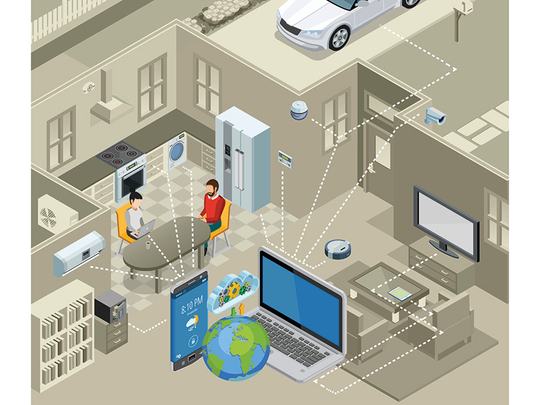
Dubai: Bluetooth, a wireless technology standard for exchanging data over short distances, has improved with the 5.0 version and has set the stage for the future by enabling simple and effortless interactions across the vast range of connected devices.
The technology, which was introduced in 1994 by Ericsson, and now Bluetooth Special Interest Group (SIG) for which Ericsson is one of the founding members, is responsible for its evolution.
Speaking to Gulf News, Isil Yalcin, head of network products at Ericsson Middle East, said that Bluetooth 5 delivers “connectionless” Internet of Things (IoT), advancing beacon and location-based capabilities in home, enterprise and industrial applications. The recent technology update significantly increases the range, speed and broadcast messaging capacity of Bluetooth applications.
Bluetooth 5 can also be used for access-control applications, such as integrating Bluetooth radios into employee badges, being able to communicate with these radios via a wireless local area network (LAN) will make them less complicated to deploy and manage.
This year, smartphones running on Qualcomm 835 and Samsung Exynos 8895 [Galaxy S8 and S8 plus] chipsets have Bluetooth 5.0 version.
She said that the new version includes longer range, faster speed and larger broadcast messaging capacity, as well as improved interoperability and coexistence with other wireless technology.
“It delivers all of this while maintaining its low-energy functionality and flexibility for developers to meet the needs of their device or application,” she said.
New opportunities
The new technology continues to evolve to meet the needs of IoT developers and consumers while staying true to what Bluetooth is at its core.
Yalcin said that the introduction of the new wireless technology creates new opportunities in the IoT space by reducing complexity and cost, and giving manufacturers greater flexibility in targeting multiple applications and use cases.
According to research firm ABI, 48 billion internet-enabled devices will be installed by 2021 and Bluetooth — predicted to be in nearly one-third of those devices — is a cornerstone of that growth.
Doubling speed while still maintaining low-power consumption will provide faster data transfers and optimise responsiveness and lower latency, all of which are critical for scenarios where speed is a priority such as medical devices and security systems, etc.
Bluetooth 5 has four times the range, double the speed and eight times the broadcasting message capacity compared to Bluetooth 4.2. And Bluetooth 4.2 has 10 times the capacity of Bluetooth 4.1. So, Yalcin said that Bluetooth 5 has 80-fold capacity boost compared to Bluetooth 4.1.
The current Bluetooth version used is 4.2 and is available in many devices.
Unlike its predecessor, she said that Bluetooth 4.1 standard users could only connect to Bluetooth devices through an application, but the 4.2 includes internet protocol support profile (IPS) enable users to assign an internet Protocol (IP) address (complaint with IPv6 or 6LoWPAN standards) to a Bluetooth device.
Low-energy functionality
This way, the device can communicate directly through a router, which means a user can control it through the cloud rather than via an application. This has set the precedent and an evolutionary development in achieving a connectionless future, she said.
Bluetooth 5 can go up to 2 Mbps download speed, Bluetooth 4.1 is about 400 kbps and Bluetooth 4.2 is about 1 Mbps while low-energy Bluetooth has a nominal range of 10 to 30 meters. Bluetooth 5 extends this range to 30- or 50-metres.
“As we venture into a more connected society — where interaction, intelligence will be defined on real-time basis. The need to have low-energy functionality is paramount.”
“When we talk about massive machine type communication which includes large numbers of sensors, actuators and relays being served in remote locations, energy source will be the main limiting factor. For this reason, majority will be powered by battery which needs to last for up to 10 years in some cases,” she said.
She added that Bluetooth technologies support backward compatibility so Bluetooth 5 devices will work with other devices with earlier versions of Bluetooth. But in order to take advantage of the benefits, both devices need to support Bluetooth 5.
Factbox: Limitless possibilities
2x range at 500 kbps
4x range at 128 kbps
2x speed
8X broadcast capacity
120 metres realistic range












